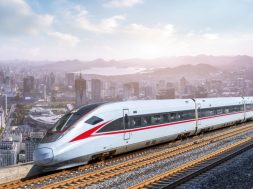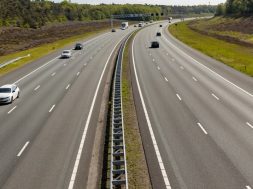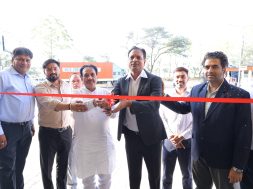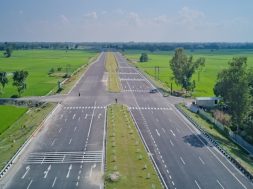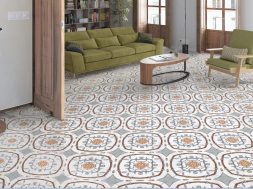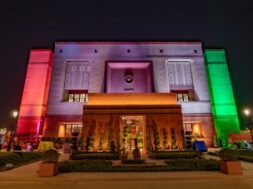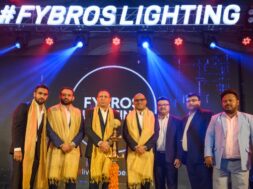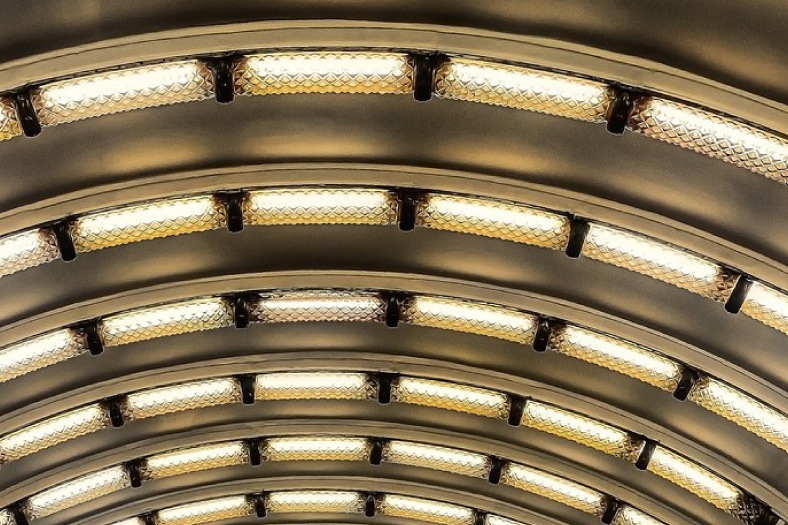
Smart solutions can act as an additional security and traffic management tool for station operators enhancing passenger’s experience.
Lighting plays a crucial role in enabling a better experience in public transportation systems such as railway stations and metros, enhancing the feeling of comfort and safety for passengers.
India has the world’s second largest passenger load, with more than 1,161 billion passenger-kilometers (tkm) travelled per year across the country. “With government’s focus on energy efficiency, Indian Railways has planned to make all stations 100 per cent LED lit to reduce power consumption. This will cover not only all railway stations but also offices, service buildings, workshops, production units and maintenance depots, says Sumit Joshi, Vice Chairman and Managing Director, Signify India Innovations Limited.
More value to passengers
In the age of Internet of Things (IoT) and connected devices, it’s possible to go a step beyond and deliver even more value to passengers with connected LED lighting solutions at railway stations. “New ‘smart’ lighting solutions can significantly improve the passenger experience whilst acting as an additional security and traffic management tool for station operators,” adds Joshi.
Smart luminaires are modular interactive lighting units designed to encourage social connectivity in public areas. They combine energy-efficient LED lighting technology alongside cameras, speakers, internet connectivity and a range of electric charging applications, all in one unified unit. Switch to compact fluorescent lamp.
With the compelling necessities for energy saving, railways lighting solutions switched over to compact fluorescent lamps (CFL) in luminaires from conventional old design with GLS bulbs or Fluorescent tubes. However, luminaire designs remained the same conventional standard ones, says Sharmila Kumbhat, Director, K-Lite Industries.
When metro rail was introduced for all metro cities, lighting solutions changed to accommodate emerging light sources including T5 lamps etc., outdating GLS lamps totally, followed by RDSO framing specification for LED luminaires for all applications.
Metro and railway stations are the busiest spaces and require appropriate and uniform lighting for the people to be alert and aware of their surroundings. To keep the area well lit, flood lights, highway, batten light and high lumen tube lights are mostly used at the stations, says Rambo Zhang, Country Head, Opple Lighting.
Usage of LED Lights
The use of LED is considered as one of the most energy-efficient and rapidly-developing lighting technologies. These lights not only last longer, but are more durable and offer comparable or sometimes even better light quality than other types of lighting, says Rajesh Uttamchandani, Director, Syska Group.
Unique lighting solutions
Custom-built luminaires
K-Lite has also developed the deep drawn type LED luminaires for railways. “Presently, we are entrusted by ALSTOM / Germany who are manufacturing locomotives for railways, to supply the luminaires for the engine room and cabin,” says Kumbhat.
The company is also associated with Train 18 from ICF and other new design of coaches being introduced.
Eco-friendly and long-lasting
”We invent better light crafted with world-class technology tend to focus on improving the overall quality of light as per the product application, says Zhang.
The company has incorporated flicker-free and anti-glare technology in their products which put no strain on the eyes of the people sitting or working under it. The anti-glare technology reduces glare and light reflection, which makes the vision sharper and clearer. In addition to that our products are eco-friendly, save energy and are long-lasting.
Free of toxic components
Syska offers a range of eco-friendly LED lights which consume up to 70 per cent less power. “We provide excellent intensity, uniform light distribution, high-efficiency, and strong ROI. Syska LED lights are completely free of toxic components like mercury, lead and glass and are also unbreakable,” says Uttamchandani.
More lighting controls patents
Signify has more lighting and lighting controls patents than any other lighting company in the world and our strong foundation is enabling us towards a brighter future as the lighting company for the Internet of Things (IoT), claims Joshi.
Enhancing aesthetic appeal
The lighting concept for the station forecourt, escalator and platform areas aims to highlight the spatial envelope rather than the light fittings themselves, LEDs with proper illumination levels needs to be selected to reduce energy and maintenance requirements which in turn reduce the lifecycle costs, says Ar. S.P. Anchuri, Chief Consultant, Anchuri & Anchuri.
Installing LED lighting
Lighting at metro stations and railways can be made more aesthetically appealing by combining the use of natural as well as artificial lighting, according to Architect Surinder Bahga, Saakaar Foundation.
‘CITE’ metro station in Paris, L’Enfant plaza station in Washington DC, Kashmere Gate Metro Station, New Delhi, Zurich Metro Station, Switzerland, Shanghai metro station etc, are some of the best examples where lighting is aesthetically very pleasing.
Instead of making lighting only more aesthetically appealing at metro stations and railways, the agenda should also be to conserve energy, says Bahga.
“A huge step is taken by Delhi Metro Rail Corporation to install energy efficient LED lighting at all metro installations which will result in smart use of natural light in and outside of metro can make it even more appealing consuming 40 per cent less energy and saving Rs 7 crore annually,” he further added.
LEDs, in regard to all lighting design, are energy saving, safe and cost reductive in regard to all lighting design. They also improve the aesthetic of the metro stations. LEDs on the track bed can also make the stations brighter and increase visibility. The stations’ coffered ceilings have acoustic panels in them, which can be made brighter. Passive illumination can be achieved with high reflectance, light-coloured walls, and floors, says Ar. S.K. Goel, Conarch Architects.
Aesthetics in lighting at metros and railways can be done simply with good looking or well-designed light fixtures, which are not only ergonomic in design, but have also been planned specific to its utility or purpose; however more important here is not how aesthetic these lights are or how aesthetically they create the lighting ambience – what is more important is how the lighting in these areas help one to navigate within these ever-crowded places, how lighting ensures that people do not, subconsciously, get close to the (unsafe) platform edge; good lighting can not only ensure how people behave but can also help make the area safe and secured – and that is the need of the hour says Ar. Prem Nath, Prem Nath And Associates.
The LED lighting move not only reduces over 10 per cent of the total energy consumed for its non-traction uses, but also saves over 240 million units of electricity, in turn helping the Indian Railways save a whopping budget, says Roopesh Gupta, MD & CEO, P3 Architectural Solutions.
Design trends
Today, LED is the fourth and latest generation of light sources, following the first-generation incandescent lamps, the second-generation fluorescent lamps, and the third-generation HID lamps.
LED has excellent characteristics, such as high efficiency, long life, compactness, light weight, zero mercury content, very slight IR and UV emissions, and the like, are advantages in comparison with conventional light sources, says Anchuri.
Designing lighting for public transport system carries lot of weight. Human comfort, aesthetics, functionality, branding and safety needs to be in consideration, says Niraj Mehta, Principal Designer, NMD Interiors.
Main focus of the lighting is to create shadow less environment in the cabin as well as it makes compartment fresh and cheerful. These days’ people travel a lot, so they expect fresh and homely environment while they travel, adds Mehta. One has seen a lot of evolution in light fitting designs from large bulky fittings to sleeker, minimalistic yet highly efficient fittings and fixtures – introduction of LED strip lights as highlighters, inculcation of colour changing mood lights in special areas, etc., too have emerged during last few years; so to say the lighting industry is evolving faster and getting better, says Nath.
Sustainability
Sustainability is a straight forward baseline to any good design solution, says Ar. Kapil Desai, RK Associates. Living room lighting trends saw warm and cozy ambience against indirect lights that are sure to set the perfect mood of the space.
Over heal art décor lighting fixtures will draw the unique focal point to any room. At eye level the right bulb will give your conversation at warm, ambient, glow fit for the luxurious time period, adds Desai.
Many of the metro stations in India and abroad have made it a point of using energy-efficient lighting systems of which natural light is becoming a part of it. LED, fluorescent tubes, electronic control gear (Ecg), high-intensity discharge lamps, automotive lamps, etc are some of the examples of lights which are helpful in saving the energy. If the lighting load is reduced from 17 to 10 per cent by the use of energy efficient light sources and control systems, the country will save 7000 MW, informs Bahga.
With the Indian government’s focus on energy efficiency, Indian Railways has planned to make all its stations 100 per cent LED lit to reduce power consumption.
Sharmila Kumbhat, Director, K-Lite Industries
Metro and railway stations are the busiest spaces and require appropriate and uniform lighting for the people to be alert and aware of their surroundings.
Rambo Zhang, Country Head, Opple Lighting
Syska LED lights are completely free of toxic components like mercury, lead and glass and are also unbreakable.
Rajesh Uttamchandani, Director, Syska Group
Smart luminaires are modular interactive lighting units designed to encourage social connectivity in public areas.
Sumit Joshi, Vice Chairman and Managing Director, Signify India Innovations Limited
LED lighting move not only reduces over 10 per cent of the total energy consumed for its non-traction uses, but also saves over 240 million units of electricity.
Roopesh Gupta, MD & CEO, P3 Architectural Solutions
Aesthetics in lighting at metros and railways can be done simply with good looking or well designed light fixtures.
Ar. S.K. Goel, Conarch Architects
Good lighting can not only ensure how people behave but can also help make the area safe and secured – and that is the need of the hour.
Ar. Prem Nath, Prem Nath And Associates
Designing lighting for public transport system carries lot of weight. Human comfort, aesthetics, functionality, branding and safety needs to be in consideration.
Niraj Mehta, Principal Designer, NMD Interiors
Lighting at metro stations and railways can be made more aesthetically appealing by combining the use of natural as well as artificial lighting.
Architect Surinder Bahga, Saakaar Foundation
Sustainability is a straight forward baseline to any good design solution.
Ar. Kapil Desai, RK Associates
LEDs with proper illumination levels needs to be selected to reduce energy and maintenance requirements which in turn reduce the lifecycle costs.
Ar. S.P. Anchuri, Chief Consultant, Anchuri & Anchuri
Cookie Consent
We use cookies to personalize your experience. By continuing to visit this website you agree to our Terms & Conditions, Privacy Policy and Cookie Policy.
